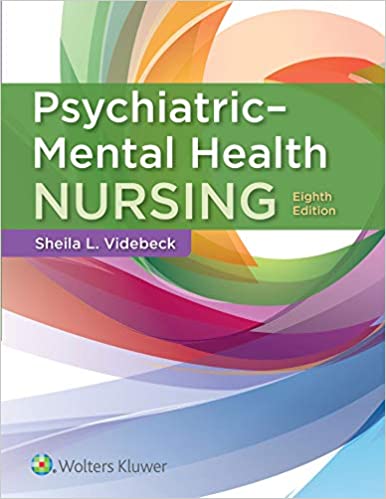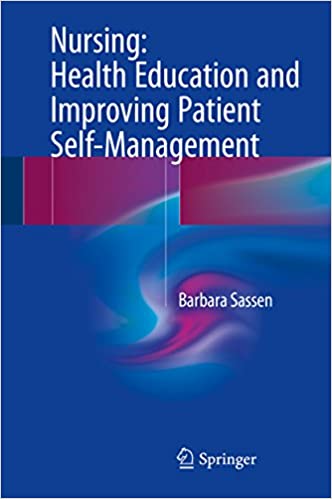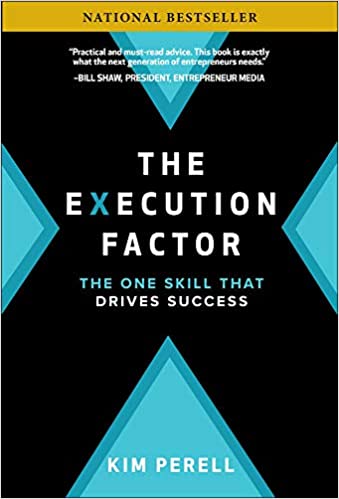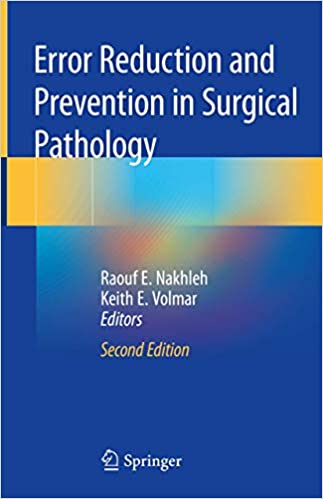
Monday, August 31, 2020
Wednesday, August 26, 2020
Monday, August 24, 2020
Better Academic Outcomes In Small Schools
Small schools
have great variety. We learned that we don't need standardized schools –- that
kills the soul! In Chicago we saw fabulous small schools that were Afro-centric,
schools that focused on phonics, fabulous small schools about whole language, small schools that are using the city as a
place to investigate. Why? Because they were small, they were focused and they
beat the odds on academic outcomes.
Small schools are the single most powerful intervention that we can imagine for
young people. And the evidence at high schools was even more powerful, as
you'll see in our report.
have great variety. We learned that we don't need standardized schools –- that
kills the soul! In Chicago we saw fabulous small schools that were Afro-centric,
schools that focused on phonics, fabulous small schools about whole language, small schools that are using the city as a
place to investigate. Why? Because they were small, they were focused and they
beat the odds on academic outcomes.
Small schools are the single most powerful intervention that we can imagine for
young people. And the evidence at high schools was even more powerful, as
you'll see in our report.
Learning
Lessons
Lessons
There are now
data from 25 years on big mistakes we make when we're reforming high schools.
The data reveal these myths:
data from 25 years on big mistakes we make when we're reforming high schools.
The data reveal these myths:
- Myth One: You can reform schools
incrementally. Forget it. You never get to where you thought you were
going. Despite your anxiety, work the hard issues up front; you cannot
work your way into them. You cut too many deals if you ease off and make
everybody happy in the beginning. And I see a lot of people doing that.
I've seen too many schools start out saying we're going to break big
schools into small schools. They keep almost everything the same. And
within three years, they end up with a couple of interdisciplinary
classes. The bottom of the school –- where failure is more evident –- is
never touched. - Myth Two: You can keep the same
infrastructure. We're still going to have the principal, the 16 vice
principals, all those deans for discipline, the boys' deans and the girls'
deans. And department heads and counselors that are organized by an
alphabet, and then classroom teachers, who are doing the real work. And
what we're going to do now, maybe, is take the department heads and make
them the heads of the small schools. Forget it. This is a time for serious
conversation. Where I've seen it done well, like in New York City, labor
unions have been fabulously supportive. Yet, I keep hearing from
management how labor won't go for it, so they're not willing to push the
limits. You can't keep the same infrastructure. - Myth Three: You need a separate ninth grade.
One lesson is don't do a ninth grade school - a kind of vertical, horizontal
thing. You just create another threshold, and then the students drop out
after ninth grade. If you're going to build a community, it's nine-12. And
you know what, the seniors do not molest the ninth graders. They help
them! - Myth Four: Veteran teachers are cynical.
"Old" teachers can't and won't do what's necessary, and their
experience equals burnout. We have seen the limit of treating experienced
teachers like they are dead wood. A bunch of schools in New York decided
to hire young, excited, amazing young people from Brown and Wesleyan. And
they're all really, really smart. But it would have been nice to have some
teachers who know something. - Myth Five: Standards and standardization
are the same. Standards are not the same as standardization. Small
schools, by their nature, are very interested in being held accountable –-
which is one of the remarkable things about small schools. The parking
lots aren't empty at 2:00 p.m. Teachers hold each other accountable; they
hold the students accountable; parents hold the teachers accountable; and
everybody holds the parents accountable. Kids hold themselves accountable.
Standards are not the same as being the same. - Myth Six: Professional development has to happen from the outside.
Teachers have an incredible amount of knowledge, if given the space to say
what 20 years inside dysfunctional institutions has done to them. A
relation between inside and outside expertise is fragile –- and powerful. - Myth Seven: Tokenism will solve the problem. Two more
black faces in an AP class just doesn't do it for me. You can't just play
with the top and color-coat. You've got to take on the whole thing.
Whole-school reform is the point. - Myth Eight: One of my worst nightmares is
when people turn small schools into tracks. There was a school somewhere
in America, where administrators decided that they'd have five small
schools inside one previous big-school building. So one school was going
to be the Special Ed school; one was going to be the Chapter One school;
one was going to be the pregnant and parenting school; and one was going
to be the language school, for the Latino kids. And then, one school was
going to be the humanities school, to attract the middle-class white kids
back to the school. That's not what anybody ever meant by small schools.
That is a fundamental distortion. Small schools are heterogeneous, and
commit to figuring out how to bring the genius out in everyone. - Myth Nine: The illusion that accountability
means rules and surveillance of teachers and students. That is not
accountability, that is oppression. Accountability comes from relationships
and responsibility. That's what small schools produce. You can't hide.
It's a group of committed folks.
Accountability
requires autonomy. A big mistake is not giving small schools the autonomy that
they need to do the work that they need to do. Small school teachers, and
parents, and community members are willing to be held accountable. But the only
way they can be held accountable is if you give them the autonomy to develop
the curriculum, to organize their time, to figure out their assessment system
and the ways that they would measure student progress. We could always close
down small schools if they don't work. However, we don't close down big high
schools when they don't work. Close small schools down if they don't work, but
first, give them time. Let them grow. Don't make autonomy a gift that some
schools can earn. That's a setup. Make autonomy a beginning condition. Then put
people under the light of surveillance if they screw it up. What we do now is
put everybody under the light of surveillance, and it chokes them.
requires autonomy. A big mistake is not giving small schools the autonomy that
they need to do the work that they need to do. Small school teachers, and
parents, and community members are willing to be held accountable. But the only
way they can be held accountable is if you give them the autonomy to develop
the curriculum, to organize their time, to figure out their assessment system
and the ways that they would measure student progress. We could always close
down small schools if they don't work. However, we don't close down big high
schools when they don't work. Close small schools down if they don't work, but
first, give them time. Let them grow. Don't make autonomy a gift that some
schools can earn. That's a setup. Make autonomy a beginning condition. Then put
people under the light of surveillance if they screw it up. What we do now is
put everybody under the light of surveillance, and it chokes them.
What's
Needed Now?
Needed Now?
First, I'm very
taken by this "metropolitanization" analysis. It's a good idea, and
very useful to document the space of injustice between what's happening in
urban areas and what's happening just on the other side of the border. In
education, we could easily do that. We could track who's in Special Ed; who's
getting college-eligible courses;
who's in AP classes; what are the post-graduate outcomes; how much teachers get
paid; what are the drop-out rates across our cities; and where are the
certified teachers. And we could document pretty easily the redlining of public
education.
taken by this "metropolitanization" analysis. It's a good idea, and
very useful to document the space of injustice between what's happening in
urban areas and what's happening just on the other side of the border. In
education, we could easily do that. We could track who's in Special Ed; who's
getting college-eligible courses;
who's in AP classes; what are the post-graduate outcomes; how much teachers get
paid; what are the drop-out rates across our cities; and where are the
certified teachers. And we could document pretty easily the redlining of public
education.
Second, we need a
theory of change. I don't think it's hard to imagine where we need to go.
That's not the mystery. How to get there is not so clear; and how to get there
systemically is less clear. I'm tired of hearing small schools is not a
systemic strategy. It could be a systemic strategy if districts figured out how
to learn from small schools rather than crush them. So we need a joint strategy
of internal-to-districts work, and external advocacy. There are teachers who
are quitting because they won't teach English only. There are teachers who are refusing to
place kids in a bottom track. There are parents who are creating freedom
schools in the South, and some of that is getting called home schooling. And
not all of those people are our enemies. They are asking for inside help and
external push. We need the combination of pilots and protests. We need the
melding of internal reform and sit-ins. We need to be working both sides. This
is what I mean by the politics of urgency.
theory of change. I don't think it's hard to imagine where we need to go.
That's not the mystery. How to get there is not so clear; and how to get there
systemically is less clear. I'm tired of hearing small schools is not a
systemic strategy. It could be a systemic strategy if districts figured out how
to learn from small schools rather than crush them. So we need a joint strategy
of internal-to-districts work, and external advocacy. There are teachers who
are quitting because they won't teach English only. There are teachers who are refusing to
place kids in a bottom track. There are parents who are creating freedom
schools in the South, and some of that is getting called home schooling. And
not all of those people are our enemies. They are asking for inside help and
external push. We need the combination of pilots and protests. We need the
melding of internal reform and sit-ins. We need to be working both sides. This
is what I mean by the politics of urgency.
Third, we need to
offer support for teachers and parents and places not yet engaged in reform.
Too many of our friends are teaching and working and committed to schools that
haven't yet done the work. What we can't do is only go to the places where
there's sufficient energy for change or we will lose some of our most dedicated
buddies and friends. I know many of us have committed to staying in places that
are not "there" yet, and you're doing God's work. Thank you all.
offer support for teachers and parents and places not yet engaged in reform.
Too many of our friends are teaching and working and committed to schools that
haven't yet done the work. What we can't do is only go to the places where
there's sufficient energy for change or we will lose some of our most dedicated
buddies and friends. I know many of us have committed to staying in places that
are not "there" yet, and you're doing God's work. Thank you all.
Jeff C. Palmer is a teacher, success coach, trainer,
Certified Master of Web Copywriting and founder of https://Ebookschoice.com.
Jeff is a prolific writer, Senior Research Associate and Infopreneur having
written many eBooks, articles and special reports.
Certified Master of Web Copywriting and founder of https://Ebookschoice.com.
Jeff is a prolific writer, Senior Research Associate and Infopreneur having
written many eBooks, articles and special reports.

Friday, August 21, 2020
Fluid, Electrolyte and Acid-Base Physiology: A Problem-Based Approach 5th Edition, ISBN-13: 978-0323355155 – ebookschoice.com
Fluid, Electrolyte and Acid-Base Physiology: A Problem-Based Approach 5th Edition, ISBN-13: 978-0323355155 – ebookschoice.com: Fluid, Electrolyte and Acid-Base Physiology: A Problem-Based Approach 5th Edition, ISBN-13: 978-0323355155 [PDF eBook eTextbook] 528 pages Publisher: Elsevier; 5 edition (November 10, 2016) Author(s): Kamel S.


Wednesday, August 19, 2020
Tuesday, August 18, 2020
Equal Education For All American Students – eBooksCheaper.com

This paper argues that for most of the 20th century, schools
have constructed multiple categories of "unlikeness" or unlike
ability, and that these categories were created or soon appropriated to mean
"children who cannot learn together." Important evidence collected
throughout the century, but most especially in the past twenty years, reveals
that school categories favoring children's likeness, rather than their
"unlikeness" promise to improve educational fairness and the
country's educational quality. Ability grouping has been bolstered by the
argument that equal opportunity in a
democracy requires schools to provide each student access to the kind of
knowledge and skills that best suit his or her abilities and likely adult
lives. To make the argument more palatable in a culture that, rhetorically at
least, values classless and colorblind policies, educators and policymakers
have reified categorical differences among people. So, in contemporary schools,
there are "gifted" students, "average" students, "Title
I" students, "learning disabled" students, and so on, in order
to justify the different access and opportunities students receive. Assessment
and evaluation technology permits schools to categorize, compare, rank, and
assign value to students' abilities and achievements in relationship to one
another (as well as to students in other schools, states, and countries—past
and present). Homogeneous grouping began in earnest early in the 20th century.
It matched the prevailing IQ conception of intelligence, behavioral theories of
learning, a transmission and training model of teaching, and the factory model
of school organization. It fit with schools' role in maintaining a social and
economic order in which those with power and privilege routinely pass on their advantages
to their children. Homogeneous grouping
embodied a belief that permeated schooling during the 20th century—that we
understand most about students when we look at their differences, and the more
differences that can be identified, the better our understanding and teaching.
Homogeneous grouping provided policymakers and educators a way to
"solve" an array of problems attributed to the growing diversity of
students. New immigrants needed to learn English and American ways. Factories
needed trained workers. Urban youth needed supervision. And schools needed to
continue their traditional role of providing high-status knowledge to prepare some students for the professions.
Policymakers defined equal educational opportunity as giving all students the
chance to prepare for largely predetermined and certainly different adult
lives. Concurrently, two phenomena shaped a uniquely American definition of
democratic schooling: (1) universal schooling would give all students some
access to knowledge; (2) IQ could justify differentiated access to knowledge as a hallmark of democratic fairness. While
most current grouping practices don't rely on IQ—at least exclusively—the early
dependence upon it set a pattern that continues today. Standardized achievement
tests, strikingly similar to IQ tests, play an important role in dividing
students into ability groups and qualifying students for compensatory education
programs; standardized language proficiency tests determine which class
"level" is appropriate for limited English students. In conjunction
with other measures, IQ remains central in the identification of gifted and
cognitively disabled students.
have constructed multiple categories of "unlikeness" or unlike
ability, and that these categories were created or soon appropriated to mean
"children who cannot learn together." Important evidence collected
throughout the century, but most especially in the past twenty years, reveals
that school categories favoring children's likeness, rather than their
"unlikeness" promise to improve educational fairness and the
country's educational quality. Ability grouping has been bolstered by the
argument that equal opportunity in a
democracy requires schools to provide each student access to the kind of
knowledge and skills that best suit his or her abilities and likely adult
lives. To make the argument more palatable in a culture that, rhetorically at
least, values classless and colorblind policies, educators and policymakers
have reified categorical differences among people. So, in contemporary schools,
there are "gifted" students, "average" students, "Title
I" students, "learning disabled" students, and so on, in order
to justify the different access and opportunities students receive. Assessment
and evaluation technology permits schools to categorize, compare, rank, and
assign value to students' abilities and achievements in relationship to one
another (as well as to students in other schools, states, and countries—past
and present). Homogeneous grouping began in earnest early in the 20th century.
It matched the prevailing IQ conception of intelligence, behavioral theories of
learning, a transmission and training model of teaching, and the factory model
of school organization. It fit with schools' role in maintaining a social and
economic order in which those with power and privilege routinely pass on their advantages
to their children. Homogeneous grouping
embodied a belief that permeated schooling during the 20th century—that we
understand most about students when we look at their differences, and the more
differences that can be identified, the better our understanding and teaching.
Homogeneous grouping provided policymakers and educators a way to
"solve" an array of problems attributed to the growing diversity of
students. New immigrants needed to learn English and American ways. Factories
needed trained workers. Urban youth needed supervision. And schools needed to
continue their traditional role of providing high-status knowledge to prepare some students for the professions.
Policymakers defined equal educational opportunity as giving all students the
chance to prepare for largely predetermined and certainly different adult
lives. Concurrently, two phenomena shaped a uniquely American definition of
democratic schooling: (1) universal schooling would give all students some
access to knowledge; (2) IQ could justify differentiated access to knowledge as a hallmark of democratic fairness. While
most current grouping practices don't rely on IQ—at least exclusively—the early
dependence upon it set a pattern that continues today. Standardized achievement
tests, strikingly similar to IQ tests, play an important role in dividing
students into ability groups and qualifying students for compensatory education
programs; standardized language proficiency tests determine which class
"level" is appropriate for limited English students. In conjunction
with other measures, IQ remains central in the identification of gifted and
cognitively disabled students.
Over the course of the 20th century, compulsory education
laws and the necessity of a highschool diploma drew more and more students to
school—even those previously considered uneducable. States and local school
systems developed an array of special programs for students who, in earlier
times, simply would not have been in school. By the 1960s, the federal
government had turned to special categorical programs as its principal way to
guarantee education for all American students. The Elementary and Secondary Education Act
(ESEA) provided categorical funding
for "educationally deprived" students. Lau et. al. v. Nichols et. al.
was brought on behalf of Chinese students in San Francisco and led to
legislation requiring that all schools provide special assistance to their
students whose native language is not English. The Individuals with Disabilities Education
Act (IDEA) provided funds to
classify students with physical and neurological problems and provide these
students with special education programs when it was believed that they could
not be accommodated in regular programs. Advocates for "gifted"
students increasingly used the "bell curve" logic to argue that the
gifted and the cognitively disabled are like a pair of bookends, and that those
at the high end of the curve also required special support because they are as
different from "normal" students as the disabled. Educators responded
in culturally predictable ways. They identified students who were
"different," diagnosed their differences as scientifically as
possible, and assigned them to a category. They then grouped students for
instruction with others in the same category and tailored curriculum and
teaching to what each group "needs" and what the culture expects. So,
today, educators routinely assign "normal" students to
"regular" classes at different levels (e.g., high, average, slow).
They place the others in "special" programs for learning disabled,
behavioral problems, gifted, limited English, poverty-related academic
deficiencies, and more. Within homogenous groups, teachers assume students can
move lock step through lessons and that all class members will profit from the
same instruction on the same content at the same pace. Lurking just beneath the
surface of these highly rationalized practices, however, are the illusion of
homogeneity, the social construction of classifications, the prevailing biases
of race and social class, and self-fulfilling prophesies of opportunities and
outcomes.
laws and the necessity of a highschool diploma drew more and more students to
school—even those previously considered uneducable. States and local school
systems developed an array of special programs for students who, in earlier
times, simply would not have been in school. By the 1960s, the federal
government had turned to special categorical programs as its principal way to
guarantee education for all American students. The Elementary and Secondary Education Act
(ESEA) provided categorical funding
for "educationally deprived" students. Lau et. al. v. Nichols et. al.
was brought on behalf of Chinese students in San Francisco and led to
legislation requiring that all schools provide special assistance to their
students whose native language is not English. The Individuals with Disabilities Education
Act (IDEA) provided funds to
classify students with physical and neurological problems and provide these
students with special education programs when it was believed that they could
not be accommodated in regular programs. Advocates for "gifted"
students increasingly used the "bell curve" logic to argue that the
gifted and the cognitively disabled are like a pair of bookends, and that those
at the high end of the curve also required special support because they are as
different from "normal" students as the disabled. Educators responded
in culturally predictable ways. They identified students who were
"different," diagnosed their differences as scientifically as
possible, and assigned them to a category. They then grouped students for
instruction with others in the same category and tailored curriculum and
teaching to what each group "needs" and what the culture expects. So,
today, educators routinely assign "normal" students to
"regular" classes at different levels (e.g., high, average, slow).
They place the others in "special" programs for learning disabled,
behavioral problems, gifted, limited English, poverty-related academic
deficiencies, and more. Within homogenous groups, teachers assume students can
move lock step through lessons and that all class members will profit from the
same instruction on the same content at the same pace. Lurking just beneath the
surface of these highly rationalized practices, however, are the illusion of
homogeneity, the social construction of classifications, the prevailing biases
of race and social class, and self-fulfilling prophesies of opportunities and
outcomes.
The considerable student differences within supposedly
homogenous classes are obvious and well documented. And yet, for most people,
the characteristics and categories by which students are sorted remain more
salient than the "exceptions" that impugn those categories. Many
educational constructs, including those used to classify students, began as
narrowly defined, highly specialized, technical terms or measures. However, as
they make their way from research to professional journals and teacher
preparation programs to popular media to the everyday talk of policymakers and
the public, they loose their narrow definitions and specialized uses. What may
have begun as specific technical concepts or as informal notions such as
"at risk," "gifted," "high ability,"
"college prep," "attention deficit,"
"hyperactive," "handicapped," etc. are quickly reified and
become a deeply embedded feature of students' identities in their own and
others' minds. African American, Latino, and low-income students are
consistently overrepresented in low-ability, remedial, and special education
classes and programs. This is not surprising, given that grouping practices
grew from the once accepted practice of preparing students of different racial,
ethnic and social-class backgrounds for their separate (and unequal) places in
society. In part, placement patterns reflect differences in minority and white
students' learning opportunities
that affect their preparation and achievements. But they also reflect the fact
that US schools use white, largely middle-class standards of culture and
language styles to screen for academic ability and talent. Teachers and school
psychologists sometimes mistake the language and dialect differences of
Hispanic and Black students for poor language skills, conceptual
misunderstandings, or even poor attitudes. An additional hazard for students of
color is that schools often confuse cultural differences with cognitive
disabilities, particularly retardation. Researchers have noted for the past 25
years that students with identical IQs but different race and social class have
been classified and treated very differently in special education placements. The misidentification problem
triggered both federal and state court decisions requiring that potentially
disabled students receive due process. In a far reaching decision, the
California courts ruled in Larry P. v. Wilson Riles (1979) that schools could
no longer use intelligence tests to identify minority students as mentally
retarded. However, substantial problems remain and new ones emerge, including
recent evidence that African American boys are disproportionately identified as
having Attention Deficit Hyperactivity Disorder (ADHD).
homogenous classes are obvious and well documented. And yet, for most people,
the characteristics and categories by which students are sorted remain more
salient than the "exceptions" that impugn those categories. Many
educational constructs, including those used to classify students, began as
narrowly defined, highly specialized, technical terms or measures. However, as
they make their way from research to professional journals and teacher
preparation programs to popular media to the everyday talk of policymakers and
the public, they loose their narrow definitions and specialized uses. What may
have begun as specific technical concepts or as informal notions such as
"at risk," "gifted," "high ability,"
"college prep," "attention deficit,"
"hyperactive," "handicapped," etc. are quickly reified and
become a deeply embedded feature of students' identities in their own and
others' minds. African American, Latino, and low-income students are
consistently overrepresented in low-ability, remedial, and special education
classes and programs. This is not surprising, given that grouping practices
grew from the once accepted practice of preparing students of different racial,
ethnic and social-class backgrounds for their separate (and unequal) places in
society. In part, placement patterns reflect differences in minority and white
students' learning opportunities
that affect their preparation and achievements. But they also reflect the fact
that US schools use white, largely middle-class standards of culture and
language styles to screen for academic ability and talent. Teachers and school
psychologists sometimes mistake the language and dialect differences of
Hispanic and Black students for poor language skills, conceptual
misunderstandings, or even poor attitudes. An additional hazard for students of
color is that schools often confuse cultural differences with cognitive
disabilities, particularly retardation. Researchers have noted for the past 25
years that students with identical IQs but different race and social class have
been classified and treated very differently in special education placements. The misidentification problem
triggered both federal and state court decisions requiring that potentially
disabled students receive due process. In a far reaching decision, the
California courts ruled in Larry P. v. Wilson Riles (1979) that schools could
no longer use intelligence tests to identify minority students as mentally
retarded. However, substantial problems remain and new ones emerge, including
recent evidence that African American boys are disproportionately identified as
having Attention Deficit Hyperactivity Disorder (ADHD).
Placement in a low class becomes a self-fulfilling prophecy
of low expectations, fewer opportunities, and poor academic performance. Poor performance begins the cycle anew,
giving additional justification to schools to reduce expectations and
opportunities. Extensive research makes clear that, in every aspect of what
makes for a quality education, kids in lower tracks typically get less than
those in higher tracks and gifted programs. Finally, grouping practices help
shape students' identities, status, and expectations for themselves. Both
students and adults mistake labels such as "gifted," "honor
student," "average," "remedial," "learning
disabled," and "mild mental retardation" for certification of
overall ability or worth. Everyone without the "gifted" label has the
de facto label of "not gifted." The resource classroom is a
low-status place and students who go there are low status students. The result
of all this is that most students have needlessly low self-concepts and schools
have low expectations. These recommendations reflect growing support for
heterogeneous grouping as necessary to ensure that all students have access to
high-quality curriculum, teachers, and learning experiences. For example,
early analyses of the disappointing performance of U.S. students on the Trends
in International Mathematics and Science Study (TIMSS) support mounting
concerns that the low scores stem, in part, from the tracking of most American
students in less academically demanding
math and science classes. Increasingly, educators and policymakers are
developing an awareness that schools cannot teach or achieve social justice
unless they eliminate grouping practices. A number of school desegregation
cases have cited the practice as a source of continuing racial discrimination.
However, this goal will not be accomplished quickly, and policy reports will
simply gather dust unless enlightened educators understand and act to change
the norms and political relations these grouping practices embody. There is a
long, hard road ahead.
of low expectations, fewer opportunities, and poor academic performance. Poor performance begins the cycle anew,
giving additional justification to schools to reduce expectations and
opportunities. Extensive research makes clear that, in every aspect of what
makes for a quality education, kids in lower tracks typically get less than
those in higher tracks and gifted programs. Finally, grouping practices help
shape students' identities, status, and expectations for themselves. Both
students and adults mistake labels such as "gifted," "honor
student," "average," "remedial," "learning
disabled," and "mild mental retardation" for certification of
overall ability or worth. Everyone without the "gifted" label has the
de facto label of "not gifted." The resource classroom is a
low-status place and students who go there are low status students. The result
of all this is that most students have needlessly low self-concepts and schools
have low expectations. These recommendations reflect growing support for
heterogeneous grouping as necessary to ensure that all students have access to
high-quality curriculum, teachers, and learning experiences. For example,
early analyses of the disappointing performance of U.S. students on the Trends
in International Mathematics and Science Study (TIMSS) support mounting
concerns that the low scores stem, in part, from the tracking of most American
students in less academically demanding
math and science classes. Increasingly, educators and policymakers are
developing an awareness that schools cannot teach or achieve social justice
unless they eliminate grouping practices. A number of school desegregation
cases have cited the practice as a source of continuing racial discrimination.
However, this goal will not be accomplished quickly, and policy reports will
simply gather dust unless enlightened educators understand and act to change
the norms and political relations these grouping practices embody. There is a
long, hard road ahead.
Monday, August 17, 2020
Subscribe to:
Comments (Atom)













































